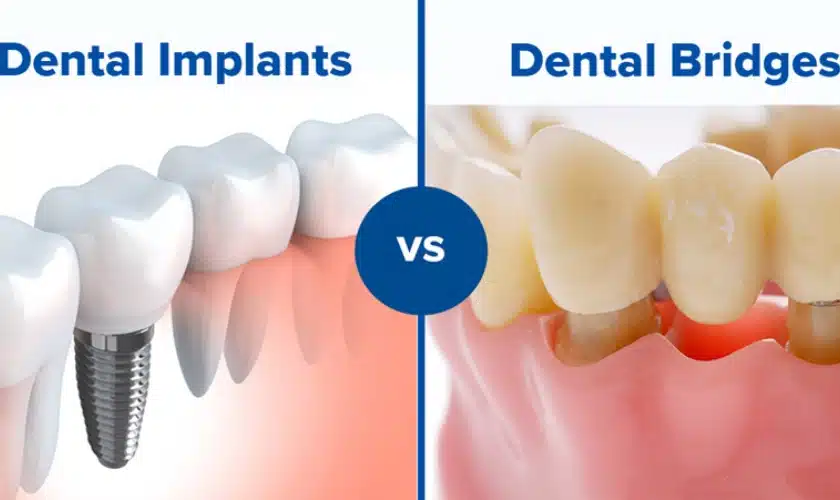Our Dental Sense Statements
Our Dental Sense Statements
Blog Article
Not known Facts About Dental Sense
Table of ContentsFacts About Dental Sense UncoveredGet This Report about Dental SenseThe Main Principles Of Dental Sense All About Dental Sense
are clinical tools surgically dental implanted right into the jaw to bring back a person's ability to eat or their appearance. They give assistance for fabricated (fake) teeth, such as crowns, bridges, or dentures. When a tooth is shed due to injury or condition, a person can experience problems such as fast bone loss, faulty speech, or changes to eating patterns that lead to discomfort.Oral dental implant systems include an oral implant body and dental implant abutment and might likewise consist of an abutment fixation screw. Professional teeth whitening. The dental implant body is operatively inserted in the jawbone instead of the tooth's root. The oral implant joint is normally affixed to the dental implant body by the joint addiction screw and prolongs with periodontals right into the mouth to sustain the connected synthetic teeth
(https://www.ted.com/profiles/48604569/about)Structure of The Dental Implant System picking oral implants, talk to your oral copyright about the possible benefits and risks, and whether you are a candidate for the procedure. Things to consider: Your total health is an important element in establishing whether you are a great prospect for oral implants, for how long it will certainly take to recover, and the length of time the implant might remain in location.
Smoking might influence the healing procedure and lower the long-lasting success of the dental implant. The healing procedure for the implant body may take several months or longer, during which time you usually have a temporary abutment in location of the tooth. the dental implant treatment: Very carefully follow the oral hygiene instructions given to you by your dental company.
The Single Strategy To Use For Dental Sense
Implant failing can lead to the demand for another medical treatment to take care of or replace the implant system. Recovers the capability to chew Restores aesthetic look Helps keep the jawbone from diminishing as a result of bone loss Maintains the health of the bordering bone and periodontals Helps maintain adjacent (neighboring) teeth stable Improves high quality of life Damages to surrounding all-natural teeth throughout dental implant positioning Injury to the surrounding cells during surgical procedure, such as sinus perforation Injury during surgical procedure (as an example, crack of surrounding jawbone) Insufficient function, such as seeming like the teeth do not attack together normally An experience that the tooth is loose or twisting in location arising from a joint screw loosening up Implant body failing (looseness of the implant body) due to systemic infection, which may be more probable in patients with unchecked diabetes due to neighborhood infection in bone and gums sustaining the implant body because of postponed recovery, which might be more probable in patients who smoke Difficulty cleaning up the periodontals around the implant, leading to inadequate oral hygiene Unattended gum condition Post-surgical feeling numb as a result of nerve impingement or damage Always notify health and wellness treatment carriers and imaging specialists that you have oral implants before any magnetic vibration imaging (MRI) or x-ray procedures.
FDA is not mindful of any negative events reported for MRI or x-ray treatments with oral implants. Dental implants systems are commonly made of products that adhere to global agreement criteria of the International Organization for Standardization (ISO) or ASTM International. These criteria have details of what makes a secure product.

An oral implant is a structure site web that replaces a missing tooth. With screw-like devices, the surgeon inserts an implant right into the jawbone, and it acts as an anchor for a man-made tooth, called a crown.
More About Dental Sense
Some individuals are not qualified for dental implant surgical treatment. It is for oral surgeons to run on individuals with: severe illnessuncontrollable metabolic diseasebone or soft tissue disease or infectionIf these issues are dealt with, an individual can have the surgical treatment. In, oral cosmetic surgeons avoid operating individuals with: If individuals with any one of the above go through oral implant surgical treatment, there is a greater threat of the implant failing.

Oral dental implant surgical procedure is a customized procedure. It's not the exact same for everybody. The complying with offers a general summary of what you can anticipate your dental expert, dental cosmetic surgeon, periodontist or prosthodontist to do: Place the implant surgically. Offer you time to recover. Connect the blog post and final crown, bridge or denture.
Next off, your surgeon will meticulously position the dental implant into your jaw. If your implant is near the front of your mouth, your dental practitioner will certainly make a short-term tooth for you to put on up until you heal.
About Dental Sense
Throughout the recovery phase, your jawbone must fuse to the dental implant. This procedure can take anywhere from 3 to nine months.
Once your implant heals, your dentist can connect the joint (little port blog post) and your final remediation (crown, bridge or denture). This generally takes regarding one hour to finish and may call for a 2nd small surgical treatment. You shouldn't feel any type of discomfort throughout your dental implant procedure since your provider will make use of drug to numb your periodontals.
Report this page